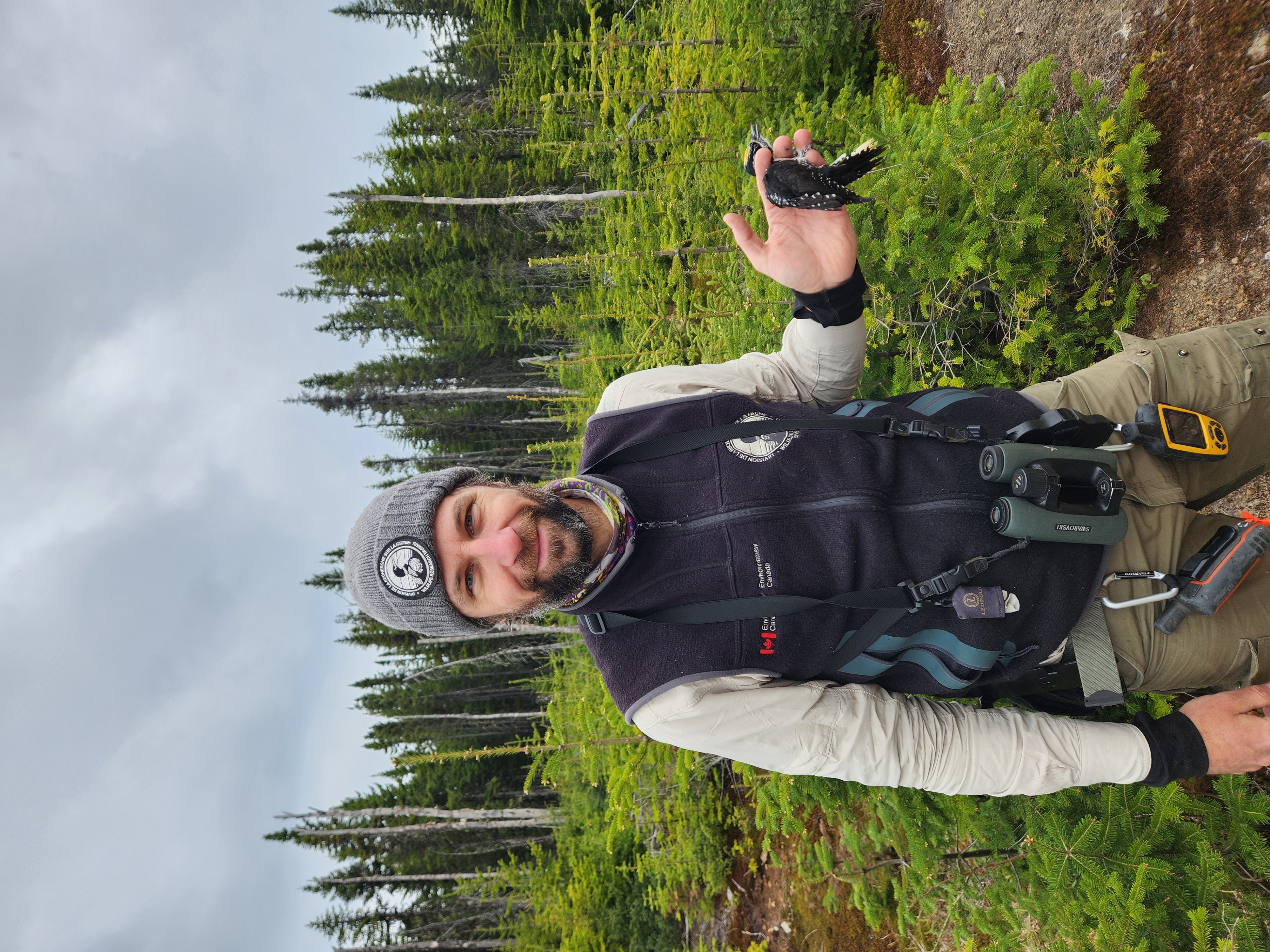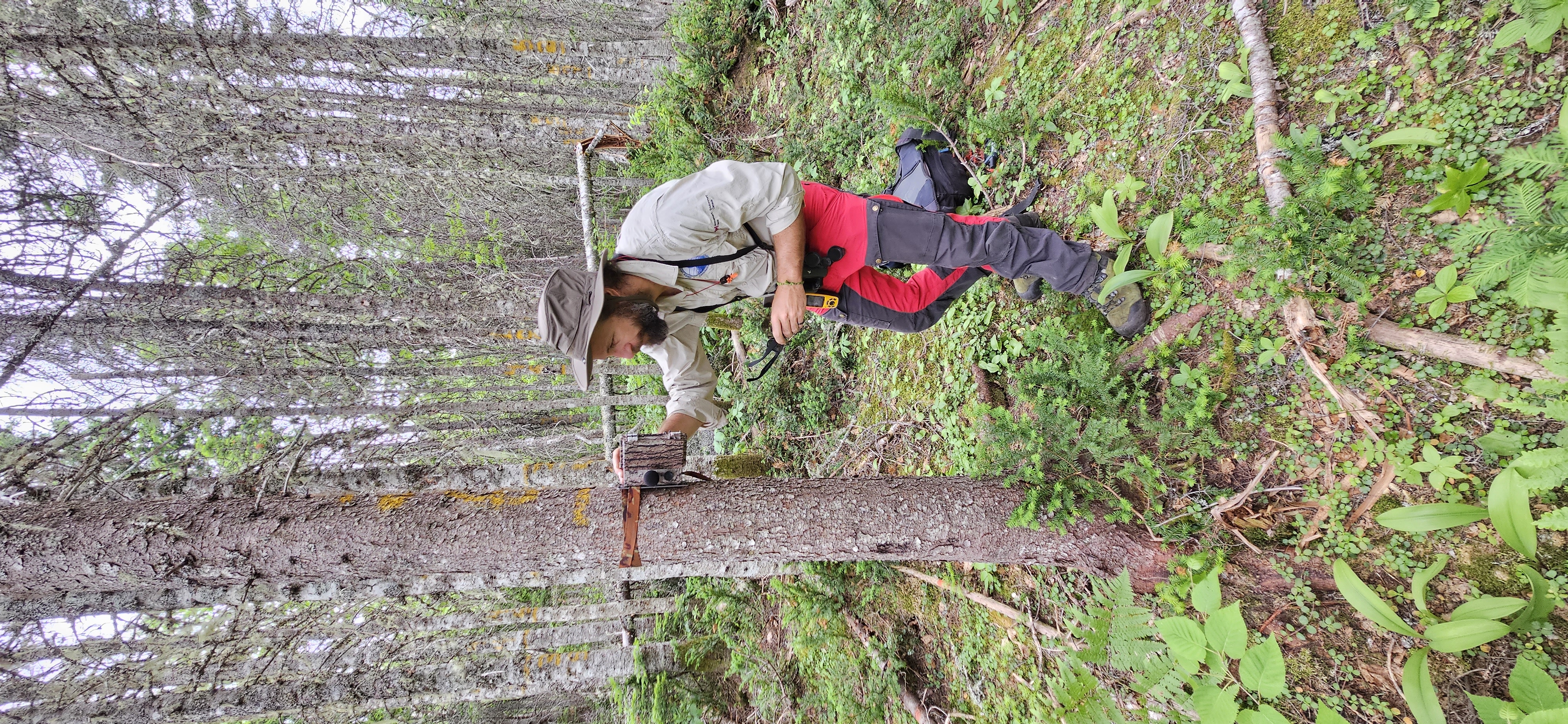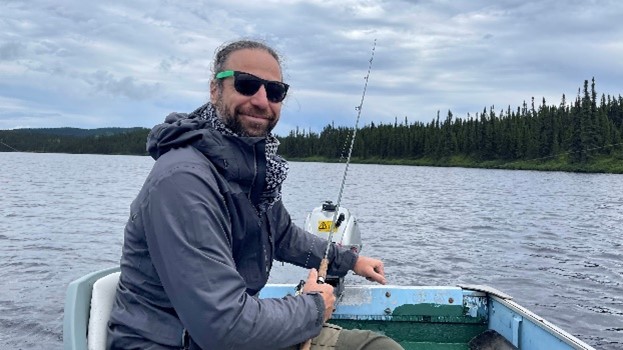Profile of Junior Tremblay
Mission: Be an agent of change

Biologist Junior Tremblay hails from the Saguenay–Lac-Saint-Jean region of Quebec, where the forest is essential not only to people’s quality of life, but also to the local economy. “I come from a remote area where I spent a lot of time in nature. My view of the forest changed completely when I watched Forest Alert, the 1999 documentary on logging in Quebec’s boreal forest. Because I loved nature, I wanted to become an agent of change in the way the forest was harvested.”
Junior enrolled in biology, then did a master of science degree in forestry at Université Laval. “During my first master’s research experience, I studied the structure of old-growth forests in the Lower St. Lawrence region, then analyzed their composition in terms of birds, fungi, and non-vascular plants. This project has guided my career. Working with living organisms to assess the ecological integrity of an ecosystem, and determining their conservation value, was a spark plug for my research career.”
Casting new light on population dynamics
Junior has developed an expertise in birding that is recognized across the country and beyond, with a particular focus on boreal woodpeckers. “This group has always interested me—I identify with these birds. Like the beaver, they are hard workers and, in a way, ecological engineers who create cavities in the trees that are used by other species,” says the ornithologist.

His doctoral studies received a great deal of attention. In 2004, the Black-Backed Woodpecker was known to be a burned-forest-dependent species, and the presence of this species in unburned forests had not been reported in scientific literature. His thesis aimed to define the role of unburned old-growth forests in the nesting ecology and demography of the Black-Backed Woodpecker. “At the time, I was the weirdo looking for Black-Backed Woodpeckers in unburned forests! My results surprised the scientific community, so much so that I had difficulty getting chapters of my thesis accepted,” explains the researcher who shed new light on the population dynamics of this species in the boreal forest. His research, completed at the Université du Québec à Chicoutimi in 2009, concluded that the Black-Backed Woodpecker maintains breeding populations in unburned old-growth forests, and that these forests even offer greater long-term stability than burned forests. Literature had previously suggested that this bird was a strict specialist in burned forests.
Connecting people, issues, and solutions

After completing his studies, Junior joined Quebec’s Ministry of Forests and Wildlife. His work involved proposing protection measures for forest species at risk, based on available literature and data on ecosystem management and the species in question, such as Arctic Char, tree-roosting bats, and birds of prey. Junior explains that “some of the protective measures I suggested were implemented, and it was very motivating as I got closer to my goal” of becoming an agent of change. His main motivation, which continues to this day, is to be able to use the data collected in the field and develop models to predict the impact of human activity and industrial development on wildlife.
There may be a misconception that universities are the only research institutions; I’m happy to report that departments like Environment and Climate Change Canada are behind applied research projects that add to scientific evidence and have an impact on certain regulations.
In 2013, he seized the opportunity of a research position that opened up at Environment and Climate Change Canada. One of the projects he is currently piloting is an excellent example of applied research. He is working with peers, academics, and industry on a habitat model for the Bicknell’s Thrush, a bird species threatened by loss of habitat. This model suggests to project developers areas to protect where there is a high thrush occurrence, and areas where development should include measures to mitigate impacts on this species. “This is a perfect example of collaborative work, involving environmental organizations, Indigenous communities, businesses, private landowners, and provincial and federal government departments,” explains the researcher.
Increasingly, Junior is realizing the need to work in concert with other scientists dealing with issues similar to those that are at the heart of his research, in order to develop coherent recommendations and solutions that encompass the various issues within a single ecosystem. He is working with a multidisciplinary team to assess the cumulative effects of logging and climate change on biodiversity and ecosystem services, including carbon sequestration and storage, as well as the production of wood materials. “Since everything in nature is interconnected, we wondered whether there might be solutions that could benefit the various issues while minimizing compromises. Our simulations, which were carried out in two separate regions of Quebec, have shown that there is no single solution; the ecological context and history of landscape change in each region, whether through logging or natural disturbance, greatly influence the integrated solutions possible in the future,” explains Junior, visibly animated by the links he is forging with his colleagues and the questions that drive him.

Junior has a profound passion for nature and motivation for conservation. “I tell students not to be discouraged by possibilities that may happen in the future, which can sometimes be discouraging. If you want to take action to preserve biodiversity, find your path, whether it’s in research, technical support, administration, or communication. There are many paths to follow, but above all, do what you’re passionate about,” Junior advises before getting back to his research.